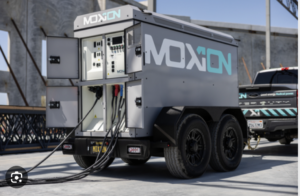More school districts shift away from diesel fuel to stretch strained budgets and promote cleaner air.
As schoolchildren around the nation head back to the bus stop in the coming weeks, a number of them may notice a change in their school buses.
A growing number of school districts across the USA are shifting parts of their fleets from diesel fuel to propane to stretch strained budgets and promote cleaner air, according to officials from school districts and from private companies that operate school fleets.
The overwhelming majority of the nation’s 480,000 school buses still run on diesel — about 95%, according to the industry publication School Transportation News. Biodiesel, usually made from domestically produced oils such as soybean oil, recycled cooking oil or animal fats and blended with petroleum diesel in amounts of 2%-20% is the most common alternative fuel, followed by compressed natural gas, according to the magazine.
However, propane seems to be the school bus alternative fuel of choice this year. Among school districts rolling out propane-powered buses when the opening school bell rings:
• Two school districts in Nebraska — Omaha and Millard — will debut 434 new propane buses, said to be the largest propane school bus fleet in the nation. The buses are operated by a subsidiary of Student Transportation of Wall, N.J. The company operates about 10,000 buses under contract to school districts in 17 states, says Ron Halley, vice president of fleets and facilities; about 900 of those buses run on propane, and100 on compressed natural gas.
• Students in Shelton, Conn., are getting 60 new propane school buses this year. The buses, which cost about $5.5 million, are owned by the city.
• Kentucky is dipping its toe into the propane-powered water this year, as the state gets its first propane-powered school bus. Crittenden County Schools are part of a pilot program that will operate the state’s only propane school bus for a year. If the pilot is successful, the state’s stringent specifications for school buses could be changed to allow other districts to go propane.
• The Fort Zumwalt School District in Missouri, which became the first to add propane buses to its fleet last year, is adding 22 buses to the eight that hit the road last year. The alternative-fueled buses now make up 18% of the district’s total fleet.
• Mesa Unified School District No. 4 in Mesa, Ariz., is taking delivery of 61 propane buses this year, which will bring its total to 89, just over 16% of the fleet, says Ron Latko,director of transportation and fleet management.
He says school transportation officials in Mesa, Arizona’s largest district, were considering alternatives to diesel in 2010. At the time, school officials around the nation were trying to figure out how to comply with new, lower emissions standards for buses enacted by the Obama administration, he says.
“We were very, very concerned because the economic situation had gotten so tight,” Latko says. “In 2010, nobody had any money. Budgets got cut all over the country. So we called around. We looked at Texas, at California. Finally we decided, let’s check out this propane.”
They had to consider not only the fuel and maintenance costs involved, but also the cost of adding a fueling infrastructure. Then there are the fuel costs. Latko says the district pays $3.54 for a gallon of diesel compared with $1.12½ for a gallon of propane. “And I get a 50-cent-a-gallon excise tax rebate, so my price is 62½ cents a gallon,” he says.
The initial cost of a new, full-size propane school bus is about $100,000 — about $3,000-$4000 more than a similarly sized diesel bus, says Todd Mouw, vice president of sales and marketing at ROUSH CleanTech of Livonia, Mich., a company that designs and develops propane fuel systems for vehicles.
Buses get about 10% fewer miles per gallon with propane than with diesel, Latko says. Even so, he calculates that over the 18-year, 277,000-mile life of a bus, propane costs $98,527 less than diesel. “And this year alone, we’re going to cut our greenhouse gas emissions by 2,789 tons.”
Gary Fiebick, operations and routing manager for special education transportation for Bend., Ore., says the Bend-Lapine School District began acquiring propane buses about three years ago and now uses them on 18 of 21 special education routes.
The downside? He says propane buses often cannot be used for teams traveling to out-of-town sporting events and for long field trips because there’s no place to buy fuel for the return trip. “But I think that’s changing, particularly in Oregon. We just have to plan ahead if we’re doing out-of-town trips and make sure we have a place to refuel for the return trip.”
School districts began seeking cleaner-burning alternatives to diesel about 10 years ago after studies found that the air inside school buses was often five to 10 times dirtier than the air outside, partly because of fumes wafting into the bus every time the door opened and closed.
Fiebick points out that today’s diesel engines burn much more cleanly than those of just a decade ago.
Today, many school districts are motivated by the bottom line, Mouw says. “School districts are concerned about costs. Budgets are tight, they’re laying people off. They’re cutting services,” he says. “This is a way to put money back in the district.”


 Moxion and NUE
Moxion and NUE